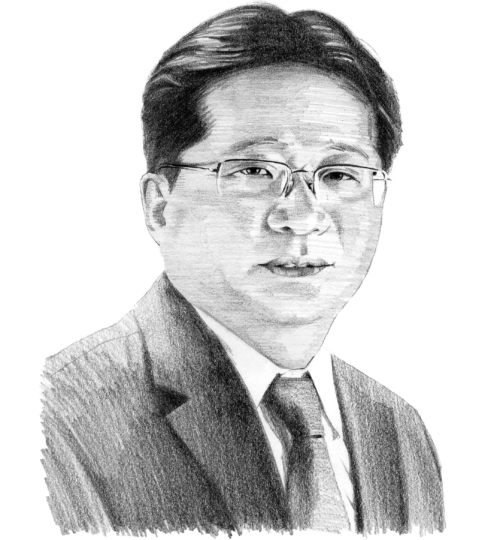What is holding up progress on small modular reactors?
Factory-built reactors offer a scalable, low-carbon solution for climate and digital needs yet still face legacy challenges to nuclear deployment.

In a nutshell
- Governments and industry reconsider SMRs as electricity demand soars
- Tech giants pursue SMRs to secure clean power for the digital era
- Regulatory, financial and fuel constraints hinder SMR commercialization
- For comprehensive insights, tune into our AI-powered podcast here
Interest in nuclear energy is undergoing a noticeable resurgence, with small modular reactors (SMRs) attracting heightened attention worldwide from governments, utilities and technology firms alike. These modern nuclear generators are compact, factory-built and scalable – making them another important source of clean power to assist in decarbonizing energy systems while meeting rapidly growing electricity demand.
Enthusiasm is widespread. According to the International Energy Agency, nuclear energy is experiencing a “strong comeback” and the start of a “new era,” while the International Monetary Fund refers to a “nuclear resurgence.” The International Atomic Energy Agency has raised its global nuclear power projections for the fifth consecutive year, citing stronger policy support and growing interest in advanced reactors, in both industrialized and emerging economies.
In May, the Trump administration unveiled an ambitious nuclear strategy that includes a goal to quadruple the United States’ nuclear capacity to 400 gigawatts by 2050, with SMRs playing a central role.
One month later, the United Kingdom announced a GBP 2.5 billion package to speed up SMR deployment, targeting the mid-2030s for the first deployment while streamlining regulatory processes as part of what the government calls the “golden age of nuclear.”
Interest in nuclear energy is undergoing a noticeable resurgence, with SMRs attracting heightened attention worldwide.
Then, in September, the U.S. and the UK signed the Atlantic Partnership for Advanced Nuclear Energy, which includes joint safety assessments, synchronized approvals to accelerate the construction of new nuclear power stations in both countries and a shared commitment to eliminate dependence on Russian nuclear fuel by 2028.
Several commercial partnerships are already emerging within and beyond this framework. Notably, British Centrica and American advanced nuclear developer X-energy plan to deploy up to 12 SMRs in northeast England. A partnership involving the American company Holtec International, EDF UK and the real estate firm Tritax Management is set to develop Holtec’s SMR-300 reactors at the former Cottam coal-fired power station located in Nottinghamshire.
Rolls-Royce SMR − a UK-based joint venture of Rolls-Royce, Qatar’s sovereign wealth fund, BNF Resources of France, Constellation of the U.S. and Czech utility CEZ − was selected by the UK government to deploy the first SMRs at Wylfa in Wales. The joint venture will also deliver the prefabricated reactors to continental Europe, starting with power plants in the Czech Republic.
Momentum is also noticeable elsewhere. Canada began construction on its first SMR at its Darlington site and is funding SMR development across multiple provinces. Sweden’s Blykalla is advancing SMR deployment through new public-private partnerships. And in Southeast Asia, countries like Vietnam, the Philippines and Thailand are beginning to integrate SMRs into their long-term energy strategies.
New players and old hurdles in the SMR rollout
It is not just the traditional power companies that are driving the trend. Tech giants like Amazon and Google have entered the SMR space not just as investors, but also as large-scale energy consumers planning to use the reactors to power their own energy-hungry operations. In 2024, Amazon announced it will commit over $500 million toward SMR development, working with public utility consortium Energy Northwest to develop a site in Washington state that could host up to four SMR units totaling 960 megawatts (MW). Amazon has also invested in X-energy through its Climate Pledge Fund.
Similarly, Google has partnered with Kairos Power to bring SMRs online by 2030, aiming to secure 500 MW of clean power for its data centers in the southeastern U.S. The involvement of these giant tech companies marks a turning point, where nuclear is no longer just a public utility asset but a commercial solution for meeting the energy demands of the digital economy and artificial intelligence.
Facts & figures
Yet, behind the impressive headlines lies a more sobering reality. Many of the longstanding challenges facing conventional nuclear power – such as lengthy licensing processes, high upfront costs, constrained fuel supply chains and unresolved waste management – remain just as relevant for SMRs. While proponents argue that these smaller reactors offer advantages in scalability and siting, the path to commercial viability is still riddled with uncertainty. Most SMR designs are unproven at scale, and the full economic, regulatory and operational implications will only become clear after broader deployment.
Meanwhile, a strategic race is unfolding. The global nuclear technology market has long been dominated by a few major players – Russia, the U.S., France, China and more recently South Korea, along with a few others – who are now vying to secure their footing in the SMR segment. Each sees SMRs as a way to extend influence and tap new markets. But while interest is unlikely to fade, SMRs alone are unlikely to transform the global electricity mix in the near term.
Nuclear renaissance
The world’s first nuclear plant to generate electricity – Obninsk, in the Soviet Union – began operation in 1954. Since then, the sector has experienced waves of enthusiasm, followed by periods of stagnation due to political opposition, high costs, long construction timelines and major accidents.
However, in recent years, nuclear energy has found itself back in the global spotlight, driven by several powerful forces: energy security, climate policy and a fast-changing electricity landscape defined by both rising demand and structural shifts on the supply side.
According to the IEA, the world is entering a new “Age of Electricity.” Electrification of transportation, heating and industry, combined with rapid growth in digital infrastructure like data centers, AI and cryptocurrency mining, is increasing electricity consumption across almost every sector. Emerging markets will account for 85 percent of new demand by 2027, but even advanced economies, where electricity use had plateaued or even fallen over the last 15 years, are now seeing consumption rise again.
At the same time, the global electricity system is under pressure from the planned retirement of ageing power infrastructure. Many advanced economies are phasing out coal-fired power plants to meet climate targets, while some of the existing nuclear fleet is approaching the end of its operational life.
Facts & figures
Global energy statistics
- More than 70 gigawatts of new nuclear capacity are under construction globally, one of the highest levels in the last 30 years (IEA).
- Nuclear power provides 9% of global electricity produced today, compared to 18% in the late 1990s.
- 31 countries operate nuclear power plants, with 73% of the world’s nuclear electricity generated in five countries: the U.S., France, China, Russia and South Korea.
- By 2027, global electricity consumption is forecast to rise by an unprecedented 3,500 terawatt-hour (TWh). This corresponds to adding more than the equivalent of Japan to the world’s electricity consumption each year (IEA).
- More than half of global electricity demand growth in 2024 came from China, where it grew by 7%.
- Electricity consumption from data centers is estimated at 1.5% of global electricity consumption in 2024.
These supply-side constraints are forcing governments and utilities to confront a growing challenge: how to replace reliable, dispatchable baseload power without increasing emissions. Nuclear energy, with its ability to generate carbon-free electricity 24/7, is increasingly viewed as a strategic solution to fill this gap and support grid stability as intermittent renewables continue to scale up.
Furthermore, Moscow’s decision to invade Ukraine in 2022 triggered an energy crisis, forcing many countries to reduce imports of Russian natural gas and reevaluate the role of nuclear power as a stable, domestic and low-carbon source of baseload electricity.
At the 2023 United Nations Climate Change Conference (COP28), the world’s governments, through the first official Global Stocktake under the Paris Agreement, explicitly included nuclear energy among the technologies that must be rapidly deployed to reach net-zero emissions. Twenty-two countries signed a pledge to triple nuclear capacity by 2050, marking a significant shift in global consensus. In electricity-hungry sectors where emissions are hard to eliminate, like heavy industry, nuclear is becoming one of the few viable decarbonization options.
Even among those less focused on climate action, nuclear energy has gained support. In the U.S., while President Donald Trump has been openly critical of wind power and rolled back environmental regulations, his administration has maintained a notably pro-nuclear stance.
Advanced technology for various energy needs
The IAEA in its high-use scenario expects nuclear operating capacity globally to more than double by 2050, reaching over two and a half times today’s levels. A quarter of that new capacity is projected to come from SMRs, which are about a tenth to a fourth of the size of a traditional nuclear energy plant. They are planned to generate up to 300 megawatts electric (MW[e]) per unit, roughly one-third the capacity of conventional nuclear reactors. Microreactors are even smaller, with outputs below 20 MWe.
The modular design of SMRs enables components to be factory-assembled and transported to installation sites, significantly shortening construction times and improving cost predictability. This makes them particularly attractive for smaller or remote grids, and for countries or industries where traditional large reactors are not viable. Beyond electricity generation, SMRs are being proposed for applications such as desalination, district heating and hydrogen production.
Facts & figures
Comparing conventional, small and micro reactors

Different SMR technologies are being developed across a range of reactor types, including water-cooled, gas-cooled, liquid metal-cooled and molten salt designs. Lower-temperature reactors, such as light water SMRs, are suitable for heating and hydrogen production, while higher-temperature designs are more appropriate for energy-intensive industrial processes like steelmaking, synthetic fuel production and chemical synthesis. By providing high-temperature heat, some SMRs can help decarbonize sectors where electrification otherwise is not feasible, such as cement production, petrochemicals and heavy-duty transport including shipping.
A key advantage of SMRs lies in their modularity and standardization. They can be built in factory settings and delivered in units, reducing on-site construction times, often to between 1.5 and 2.5 years. This allows additional modules to be added as demand grows. Such flexibility helps reduce capital investment needs and eases financing requirements, particularly since a large share of a nuclear plant’s lifetime costs are incurred during construction. Faster build times also mean faster returns on investment. Decommissioning is expected to be simpler and less costly than for large reactors.
Furthermore, SMRs incorporate advanced safety features, with many designs relying on passive safety systems that allow reactors to shut down safely without operator intervention. Their smaller size and simplified configurations reduce the risk and complexity of potential failures. SMRs typically require refueling only every three to seven years, compared to every one to two years for conventional reactors; some designs can operate for up to 30 years without refueling, much like modern nuclear submarines. This minimizes the logistical and safety challenges associated with transporting radioactive material.
The details of SMRs under scrutiny
Despite holding promise, most of the more than 80 SMR designs tracked by the IAEA remain at the conceptual or detailed design stage. Only two SMR plants are currently in operation: Russia’s Akademik Lomonosov, a floating power plant with two 35 MWe reactors supplying heat and electricity to the town of Pevek since 2020, and China’s HTR-PM, which began commercial operation in December 2023, generating 200 MWe from two high-temperature gas-cooled reactors. A few more SMRs are under construction in Argentina, China and Russia, but the technology remains largely untested at commercial scale.
As most SMR projects remain years away from deployment, their actual performance, costs and risks cannot yet be fully assessed. Even the most ardent supporters acknowledge that significant uncertainties remain. According to the IAEA, despite notable advancements, technical challenges are still being resolved. While SMRs promise lower upfront capital costs per unit, their overall economic competitiveness remains unproven. The lack of established regulatory approval pathways also poses a potential bottleneck, with licensing processes at the outset likely to be both time-consuming and uncertain.
Fuel supply is another major issue. Many SMR designs require high-assay low-enriched uranium (HALEU), which is currently produced only in the U.S. and Russia, the latter of which operates the only commercial-scale HALEU facility. While several countries are working to expand production capacity, including the U.S. and some European states, progress is slow. According to the Euratom Supply Agency, building and operating HALEU facilities requires substantial investment, and European producers have yet to see a compelling business case. The U.S. nuclear industry has warned that deployment of certain SMR designs could be delayed by years due to limited HALEU availability.
Beyond fuel supply, challenges persist in validating the business case for SMRs. As the European Union has noted, issues such as securing suitable sites, creating predictable licensing frameworks, developing global supply chains and achieving stakeholder transparency all need to be properly addressed.
Financing is particularly complex. Nuclear power projects, including SMRs, require large upfront capital, long lead times and often face regulatory and political risks that deter investment. While many countries are working to improve their regulatory frameworks to enable faster deployment without compromising safety, progress is slow and uneven.
Read more by global energy expert Carole Nakhle
- Dethroning Russia’s gas hegemony
- Rethinking oil demand in the electric vehicle era
- The UK attempts to become a ‘clean energy superpower’
These characteristics make SMRs a hard sell for risk-averse investors. As the U.S. Department of Energy pointed out in 2023, while utilities and other potential customers recognize the strategic value of nuclear power, “perceived risks of uncontrolled cost overrun, and project abandonment have limited committed orders for new reactors.”
Some studies argue that SMRs may face more – not fewer – challenges than conventional nuclear plants, highlighting that the levelized cost of electricity projections for SMRs are highly uncertain, subjective and heavily dependent on the assumptions used, making it difficult to assess their true cost competitiveness.
Other technical and societal issues require further scrutiny. For example, a recent study found that SMRs could increase the volume of nuclear waste by factors of two to 30, depending on design and operational assumptions.
Public acceptance is another overlooked challenge. As one analysis notes, meaningful deployment of SMRs would require the installation of hundreds of small reactors around the world, each hosted by a local community – a “formidable challenge.” Even for widely accepted technologies like wind and solar, specific project siting often encounters resistance. For nuclear, the threshold for opposition is likely to be much higher.
Understanding and managing these challenges, while simultaneously building the infrastructure, supply chains, regulatory readiness and financing mechanisms required, will be critical if SMRs are to fulfil their promise. But the scale of these unresolved issues raises serious questions about the practicality of the ambitious deployment targets being discussed. Until more SMRs are built and operated, it will be difficult to separate realistic potential from speculative promise.
Scenarios
Likely: Gradual and targeted SMR deployment
SMRs advance slowly over the next decade, with a handful of demonstration units completed in a few countries. These reactors are deployed primarily in niche settings, where large-scale nuclear is impractical.
While some licensing progress is made, key challenges remain: high capital costs, unclear economic returns and local resistance to siting. Most designs stay in the pre-commercial phase well into the 2030s. As a result, SMRs play only a limited role in global decarbonization, supplementing other clean energy sources rather than transforming the energy mix.
Unlikely: Rapid global SMR scale-up
Several SMR designs receive regulatory approval and reach commercial readiness by the early 2030s. Streamlined licensing processes, strong political backing and major public-private investments help bring down costs. Hundreds of reactors are commissioned globally by 2040, significantly reducing reliance on fossil fuels and making nuclear a central pillar of clean energy strategies. However, achieving this would require overcoming nearly all of today’s major barriers within a very short time frame.
Contact us today for tailored geopolitical insights and industry-specific advisory services.







